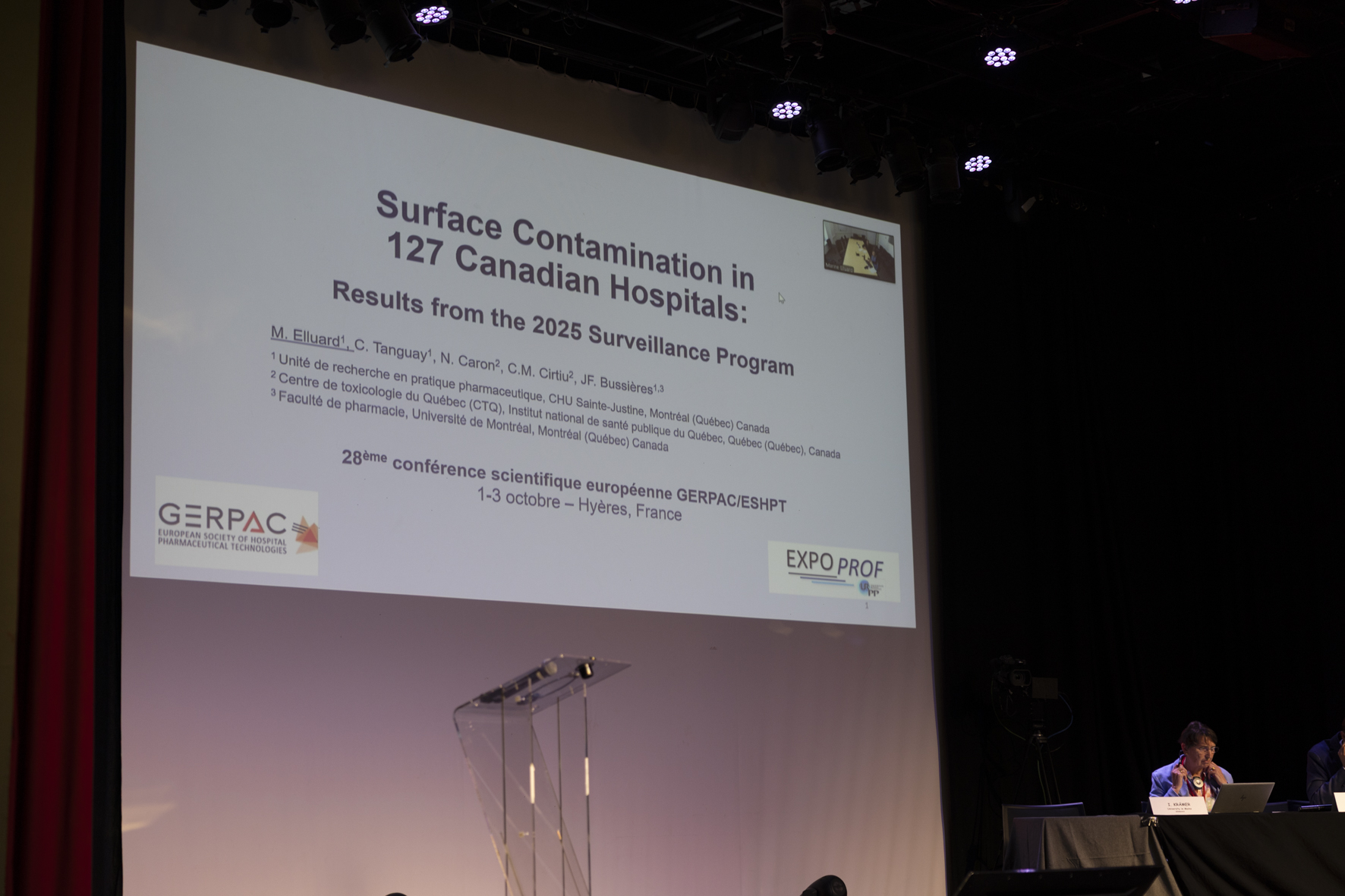Surface Contamination in 127 Canadian Hospitals: Results from the 2025 Surveillance Program
2 October 2025
M. Elluard1, C. Tanguay1, N. Caron2, C.-M. Cirtiu2, J.-F. Bussières1,31 Unité de recherche en pratique pharmaceutique, CHU Sainte-Justine, Montréal (Québec) Canada
2 Centre de toxicologie du Québec (CTQ), Institut national de santé publique du Québec, Québec, Canada
3 Faculté de pharmacie, Université de Montréal, Montréal (Québec) Canada
Context
Long-term exposure to antineoplastic drugs presents toxicity risks (genotoxic, reprotoxic, carcinogenic, teratogenic and organ toxicity) and could concern 36 000 healthcare professionals in Canada. An environmental monitoring program for antineoplastic drugs is offered to Canadian hospitals to increase awareness about surface contamination and workers safety. Objective: To describe the results of surface contamination by antineoplastic drugs in Canadian hospitals in 2025.
Method
Hospitals were invited to complete a questionnaire about on their practices and received a sampling kit. The sampling was conducted on twelve standardized surfaces according to a detailed protocol. Ten antineoplastic drugs (cyclophosphamide, docetaxel, doxorubicin, etoposide, 5-fluorouracil, gemcitabine, irinotecan, methotrexate, paclitaxel, vinorelbine) were quantified using liquid chromatography coupled with mass spectrometry. An additional and optional dosing of soluble platinum compounds was offered, and conducted using inductively coupled plasma mass spectrometry. A result was considered positive if the measured concentration exceeded the limit of detection. Descriptive statistics were performed. The results were shared via a secure platform.
Results
In 2025, 127 hospitals participated, from six Canadian provinces. More than half of hospitals opted to quantify platinum compounds (62%; 79/127). Cyclophosphamide was the most frequently detected drug (22%; 321/1453; 75th percentile < 0.0006 ng/cm2) follow by gemcitabine (14%; 197/1453; 75th percentile < 0.0004 ng/cm2), and 5-fluorouracil (4%; 54/1453; 75th percentile < 0.04 ng/cm2).The surfaces most contaminated with cyclophosphamide were the chair armest (61%; 74/122; 75th percentile: 0.005 ng/cm²), the front grille of the biological safety cabinet (BSC) (44%; 52/119; 75th percentile: 0.006 ng/cm²) and the floor in front of the BSC. Most than half of hospitals had a hazardous drug committee (55%; 67/122), and 57% (38/67) reported meeting at least three times per year.
Discussion/conclusion
Traces of antineoplastic drugs were detected, and the concentration varied depending on the surfaces sampled, the drug tested, and the specific practices of each hospital. Cyclophosphamide remained the most frequently detected drug, confirming trends from previous years. To limit contamination and exposure risks, workers must be informed and trained. Hospitals are encouraged to share their results with their teams; to assist them, an infographic was shared and a webinar was organized to present and discuss the results.
